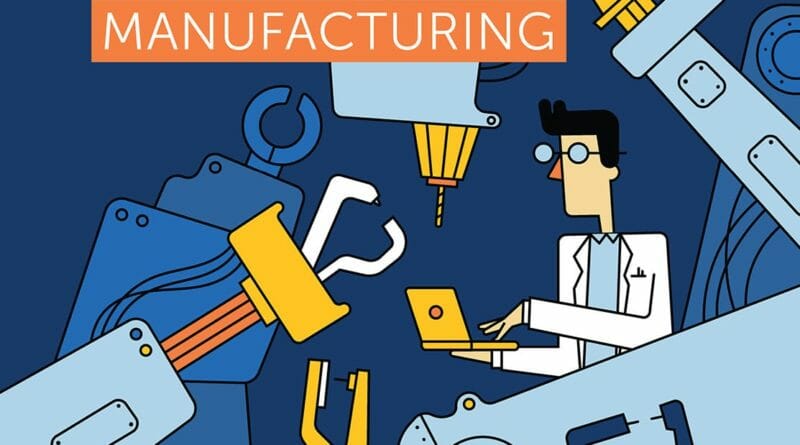The Manufacturing Labor Force Is Upskilling and Downsizing
The glory days of American manufacturing in the 1970s—when workers with a high school diploma or less held 79% of the industry’s jobs—will not return. By 2016, these workers made up just 43% of the manufacturing workforce, according to new research from the Georgetown University Center on Education and the Workforce (CEW) in partnership with JPMorgan Chase & Co. Upskilling and Downsizing in American Manufacturing finds that workers with postsecondary education now outnumber workers with a high school diploma or less in manufacturing.
The manufacturing industry plays a less central role in the American economy than it did in the past, but it still is the top provider of good jobs for workers without a bachelor’s degree in 35 states. However, the CEW researchers project that manufacturing is likely to lose 2% of employment (253,000 net jobs) by 2027.
As the overall number of jobs in manufacturing has declined, the structure of good jobs in the industry has shifted in favor of workers with more education. Workers with bachelor’s degrees greatly increased their share of non-production jobs from 29% in 1991 to 44% in 2016. High school-educated workers still hold the majority of production jobs, though they have declined from 79% to 64% of production workers.
“The downsizing accelerated upon China’s entry into the World Trade Organization,” said Anthony P. Carnevale, lead author of the report and CEW director.
The odds of finding a good job in manufacturing with a high school diploma or less have been cut in half since 1991, as 2 million good jobs for high school-educated workers have been lost. Nevertheless, manufacturing is the largest provider of jobs that pay for workers with less than a bachelor’s degree, at 4.8 million (16%) in 2016. We define good jobs as those that pay at least $35,000 per year, at least $45,000 for workers age 45 and older, and $65,000 in median earnings in 2016.
The CEW researchers found that output in manufacturing has grown by more than 60% since 1991, while employment in the industry shrank by almost 30%. In 1979, at the peak of manufacturing employment, each worker added $293,000 to manufacturing output. By 2017, that contribution had increased to $485,000. The manufacturing industry has continued to prosper while reducing its total employment.
“People now need higher skill levels and should look outside the assembly line if they want to compete with robots for manufacturing jobs,” said Jeff Strohl, co-author of the report and CEW director of research.
As robots and automated factories began handling repetitive tasks, employment fell and demand increased for workers with higher skill levels to complete non-repetitive tasks, particularly in the front office. Complex production networks that knit together suppliers and other firms across the globe require manufacturing workers with a wider variety of skills. But this networked economy has resulted in job losses when work is outsourced to specialized firms. Increased foreign trade and offshoring have also contributed to steep manufacturing job losses, especially after 2000.
Other key findings include:
- In the 1950s, manufacturing represented about 30% of the national workforce, though as the economy has shifted to services, manufacturing employment dropped to about 20% of all US jobs in 1980 and 9% in 2016.
- Workers with associate’s degrees were the only group without a bachelor’s degree to see net gains in good jobs—about 250,000 jobs—between 1991 and 2016.
- About 10% of manufacturing workers have an industry certification or license, and those with one of these credentials are more likely to have a good job than those who do not have one.
- Whites and Blacks without a bachelor’s degree lost good jobs in manufacturing, while Latinos without a bachelor’s degree gained good jobs as they grew from 9% to 16% of the manufacturing workforce between 1991 and 2016.
- Between 1991 and 2016, men without a bachelor’s degree lost nearly 2 million good jobs, or 31%. Although women lost fewer good jobs, they experienced a larger proportionate decline than men, at 43%.
For the full report and a video highlighting key findings, visit cew.georgetown.edu/
The Georgetown University Center on Education and the Workforce is an independent, nonprofit research and policy institute that studies the link between individual goals, education and training curricula, and career pathways. CEW is affiliated with the Georgetown University McCourt School of Public Policy. For more information, visit cew.georgetown.edu. Follow us on Twitter @GeorgetownCEW, Facebook, YouTube, and LinkedIn.
JPMorgan Chase & Co. is a leading global financial services firm with assets of $2.6 trillion and operations worldwide. The firm is a leader in investment banking, financial services for consumers and small businesses, commercial banking, financial transaction processing, asset management, and private equity. A component of the Dow Jones Industrial Average, JPMorgan Chase & Co. serves millions of consumers in the United States and many of the world’s most prominent corporate, institutional, and government clients under its J.P. Morgan and Chase brands. Information about JPMorgan Chase & Co. is available at http://www.jpmorganchase.com. Follow JPMorgan on Twitter @JPMorgan and Facebook.
SOURCE Georgetown University

